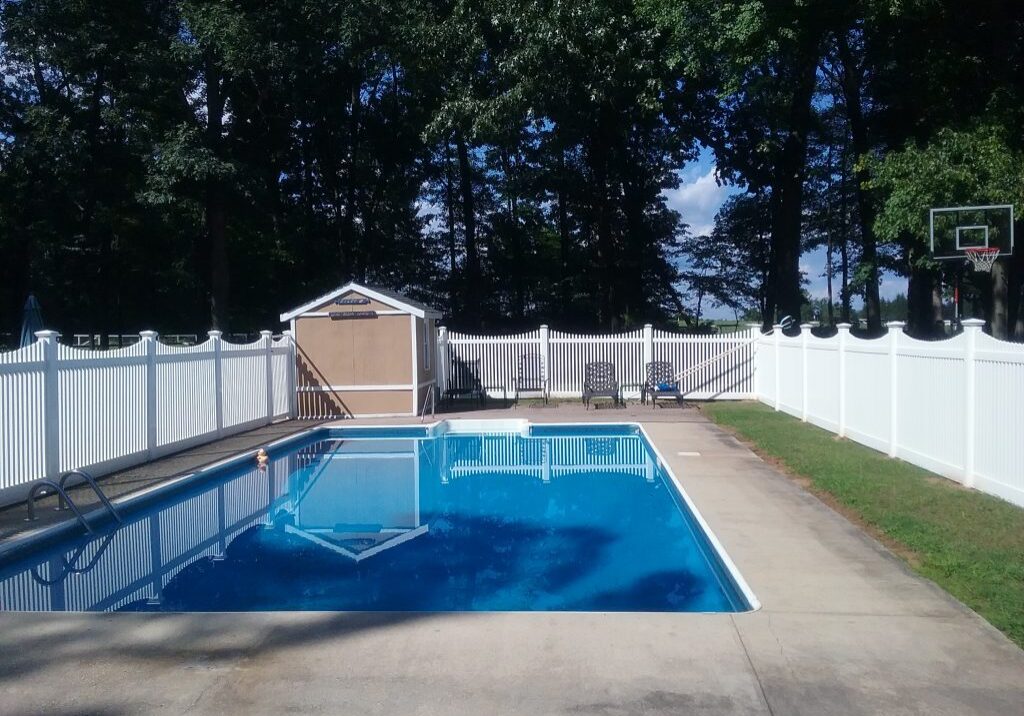All Categories
Featured

When considering mounting a fencing on your residential or commercial property, one of one of the most important steps is to understand whether you need an authorization. Fencing setups typically call for a permit to ensure that the framework abides by regional zoning legislations, building codes, and security requirements. The certain permits required can vary depending upon your area, the kind of fencing you intend to set up, and the height or positioning of the fencing. Here's a guide to aid you navigate the procedure of acquiring a fencing permit and make certain that your installation is legal and hassle-free.
Why You Required a License for a Fence Installment. The authorization procedure assists local authorities verify that your fencing does not interfere with web traffic visibility, regard your home lines, or break height restrictions. Installing a fencing without an authorization can result in penalties, elimination of the fence, or delays in building and construction, so it's important to check whether a license is required before beginning your task.
Types of Permits You Might Require. There are a few usual sorts of authorizations you may need for a fencing installment:
Building Authorization. A structure permit is the most common permit needed for fence installations. This authorization guarantees that the fence satisfies security criteria and is created according to local building regulations. A structure permit is generally required if the fencing surpasses a certain height (usually 6 feet), is made from specific products, or is situated near a public walkway or roadway.
Zoning License. A zoning license might be called for to verify that your fence follows neighborhood zoning legislations. Zoning policies can dictate where a fence can be put on your home, exactly how high it can be, and whether it is admitted specific locations (such as along building lines or ahead lawns) Some communities have regulations limiting the elevation of fencings in the front backyard to make sure exposure for pedestrians and drivers.

Obstacle Authorization. You may need an obstacle permit if you are building a fence near your building line or close to a street. A problem refers to the range a structure, consisting of fences, need to be from the home line. Obstacle policies vary by place, and guaranteeing that your fencing is put appropriately can protect against disputes with next-door neighbors and prevent infractions.
House Owner Association (HOA) Authorization. You may need authorization from them in addition to local permits if you live in a neighborhood controlled by a Home owner's Organization (HOA) HOA rules often cover the type of materials, height, style, and shade of fences. Also if your local government doesn't call for a permit, your HOA might still have specific standards that require to be adhered to.
How to Obtain a Fencing License. To request a fencing license, you'll require to call your local building department or planning office. The application procedure typically involves loading out a kind, paying a cost, and sending a website strategy of your residential property that reveals the suggested area of the fence. You might additionally require to consist of information regarding the products, elevation, and style of the fencing.
In some situations, a regional authorities might require to examine your residential or commercial property prior to accepting the authorization. When the authorization is given, you will be accredited to wage your fence installation.
When Is an Authorization Not Required? In specific situations, an authorization might not be called for. These scenarios can include:
Low Elevation Fences: In lots of areas, fences that are listed below a certain height (often 3 to 4 feet) might not need an authorization, particularly if they are put in the yard or other non-visible areas.
Fence Replacement: If you're replacing an existing fence with the same elevation and product, some areas may not require a brand-new license.
Non-Obtrusive Fences: Ornamental or short-term fences, such as those made use of for horticulture or landscaping functions, may not require licenses as long as they are reduced and not permanent.
Nevertheless, it is essential to consult your local zoning office or building division, as guidelines can vary by jurisdiction.
Consequences of Not Getting a License. Stopping working to acquire the required authorizations can lead to considerable repercussions. These include penalties, compelled removal of the fence, or perhaps delays in building and construction. Additionally, if your fence does not satisfy regional policies, you might face lawful problems with next-door neighbors or neighborhood authorities.

Verdict. By making sure that you comply with regional laws and acquire the needed licenses, you can stay clear of costly errors and make certain that your fence is lawfully compliant. Check with your local structure department, HOA, and zoning workplace to establish what permits are needed for your certain fencing project.
Latest Posts
Top-Quality Auto Repair at Montclare Auto Repair - Schedule Now!
Published Apr 20, 25
2 min read
Reliable Auto Care for Every Make & Model: Your Complete Auto Solution in Montclare
Published Apr 20, 25
2 min read
NAPA AutoCare: Quality Repairs Guaranteed by the NAPA Standard
Published Apr 20, 25
2 min read
More
Latest Posts
Top-Quality Auto Repair at Montclare Auto Repair - Schedule Now!
Published Apr 20, 25
2 min read
Reliable Auto Care for Every Make & Model: Your Complete Auto Solution in Montclare
Published Apr 20, 25
2 min read
NAPA AutoCare: Quality Repairs Guaranteed by the NAPA Standard
Published Apr 20, 25
2 min read